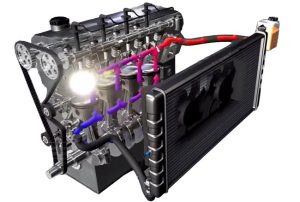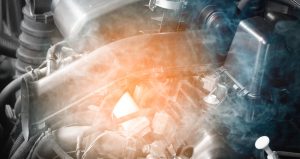Your car’s engine is a heat-generating powerhouse. While internal combustion generates the energy needed to propel your vehicle, it also creates intense temperatures that can damage engine parts if left unmanaged. That’s where the cooling system steps in — a network of components designed to maintain a safe operating temperature, prevent overheating, and ensure long-term engine reliability.
In this article, we’ll break down the essential components of a modern engine cooling system, explain how they work together, and discuss common maintenance tips to keep your engine running cool under pressure.

Why Cooling Matters
Engines operate best within a specific temperature range (usually between 90–105°C). When temperatures exceed this range:
-
Oil loses viscosity, reducing lubrication efficiency.
-
Metal components expand, leading to warping or gasket failure.
-
Combustion efficiency drops, causing performance issues or stalling.
Maintaining optimal engine temperature increases longevity, performance, and fuel economy.
Key Components of the Engine Cooling System
Here’s an overview of the core components:
| Component | Function |
|---|---|
| Radiator | Dissipates heat from the coolant using airflow |
| Water Pump | Circulates coolant through engine and radiator |
| Thermostat | Regulates coolant flow based on engine temperature |
| Radiator Fan | Pulls air through the radiator to enhance cooling, especially when idle |
| Coolant/Antifreeze | Transfers heat away from engine; protects against freezing and corrosion |
| Hoses & Clamps | Connect components; allow coolant to circulate securely |
| Expansion Tank | Holds excess coolant and allows for thermal expansion |
| Temperature Sensor | Monitors engine temperature and feeds data to ECU or dashboard |
| Heater Core | Uses engine heat to warm cabin; part of the coolant loop |
How It All Works
-
Coolant absorbs engine heat during combustion and friction.
-
The water pump circulates this heated coolant to the radiator.
-
The thermostat regulates whether coolant should circulate based on temperature.
-
In the radiator, heat is transferred to the air, cooled by natural airflow or the radiator fan.
-
Coolant returns to the engine to repeat the cycle.
Common Cooling System Problems
| Issue | Cause | Solution |
|---|---|---|
| Overheating | Low coolant, thermostat failure, or radiator clog | Refill coolant, inspect parts |
| Coolant Leak | Cracked hose, gasket failure, or water pump leak | Replace faulty components |
| Engine stays cold too long | Thermostat stuck open | Replace thermostat |
| Boiling coolant | Radiator cap failure or air in system | Bleed system, replace cap |
Maintenance Tips
To avoid costly engine damage, regular maintenance of your cooling system is essential.
Cooling System Maintenance Checklist:
-
Check coolant level monthly
-
Flush and replace coolant every 2–3 years
-
Inspect hoses for cracks or swelling
-
Clean radiator fins from debris
-
Check thermostat and temperature sensors if engine runs hot or cold
-
Monitor dashboard temperature gauge
Tip: Always use the correct type of coolant for your vehicle. Mixing types can cause sludge and corrosion.
Signs Your Cooling System Needs Attention

Be on the lookout for these red flags:
-
Temperature gauge frequently in red zone
-
Puddles of coolant under your vehicle
-
Lack of heat from the cabin heater
-
Steam coming from the hood
-
Dashboard warning lights (check engine or temp)
Ignoring these can lead to head gasket failure, warped cylinders, or engine seizure — all extremely costly to repair.
Choosing the Right Parts
Using OEM-quality or trusted aftermarket parts is crucial. Poor-quality components can result in poor heat transfer, leaks, or early failures.
Explore a wide selection of high-performance components designed for your vehicle and climate needs.
Buy Complete Engine online
Whether you’re replacing just a thermostat or refreshing the entire cooling system, reliable parts make all the difference in keeping your engine cool and protected.
Conclusion
The cooling system may not be the most glamorous part of your engine, but it plays a vital role in performance and longevity. Without it, the heat generated from combustion would quickly destroy critical components. Understanding how each part contributes to the system gives you the power to diagnose problems, perform maintenance, and keep your engine running smoothly.
Don’t wait for your car to overheat — check your coolant levels regularly, inspect components for wear, and replace parts before failure. For top-quality replacement parts tailored to your vehicle,
Buy Complete Engine online and ensure your engine stays cool under pressure.